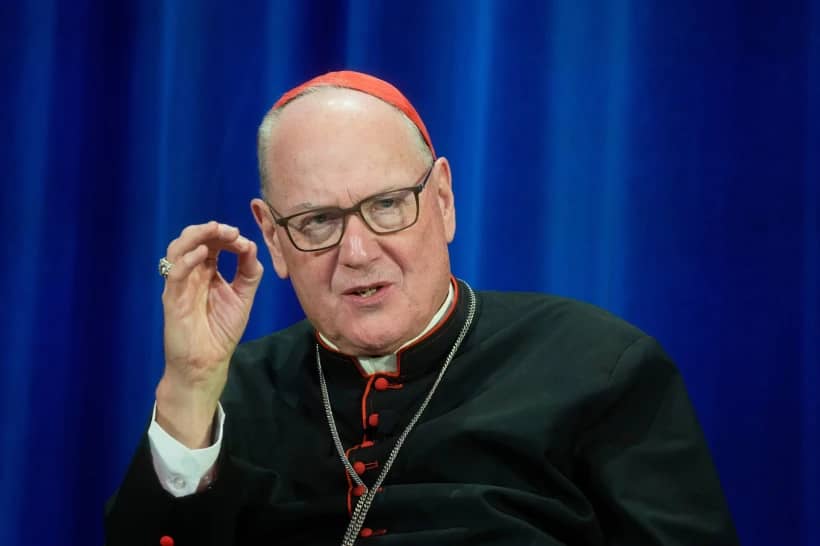“The Miracle Maker” is out of print on Blu-ray and DVD, but both are available on Amazon via third-party vendors.
“The Miracle Maker” is a singular achievement: a Jesus movie that is simple enough for children, sophisticated enough for scripture scholars and theologians, and artful enough for discerning cinephiles.
Neither a Sunday School lesson nor a revisionist reinvention, “The Miracle Maker” weaves a reverent yet fresh reading of the Gospel materials into an emotionally persuasive narrative capable of satisfying both devout believers and open-minded non-Christians. I have watched it with my family every year around Holy Week and Easter for possibly 15 years, and my appreciation has only grown over the years.
“The Miracle Maker” is a joint project of two animation houses in Wales and Russia, Cartwn Cymru in Cardiff and Christmas Films in Moscow, following their collaboration on a series of small-screen, 30-minute shorts based on Old Testament stories (“Testament: Bible in Animation”). It was co-directed by an Englishman, Derek W. Hayes, and a Russian, Stanislav Sokolov.
When the filmmakers turned their attention from the Old Testament to the New, the story of Jesus challenged them to go beyond what they had done before. The project grew in the development process into a big-screen feature film with additional funding for better production values, a brilliant script by Murray Watts, and an evocative score by Anne Dudley.
Jesus and his world are brought to life by remarkably persuasive stop-motion animation, the work of Christmas Films’ puppeteers. If stop-motion animation makes you think of the cartoony work of Aardman Animations (“Wallace & Gromit”, “Shaun the Sheep”) or Laika (“Coraline,” “The Boxtrolls”), think again.
Sokolov and his team researched the film’s look by touring the Holy Land, and created model environments authentic to the landscape and architecture of first-century Palestine, along with naturalistic puppets more evocative of 1st-century Middle Easterners than the cast of virtually any Hollywood Bible movie.
Can one really accept a puppet as Jesus? Yes, just as one sees Jesus in an icon or a crucifix — in a way more easily than one accepts an actor as Jesus. An actor is always pretending; a puppet, like an icon, simply is. An actor has a life before and after a role; an icon or puppet exists solely to mediate the one it represents.
Of course there are voice actors: a stellar, mostly British cast, including Ralph Fiennes as Jesus, Miranda Richardson as Mary Magdalene, Alfred Molina as Simon the Pharisee, and Ian Holm as Pontius Pilate. (There are two Americans: A disappointingly flat William Hurt voices Jairus, the synagogue leader whose daughter Jesus raises from the dead; more subversively, Satan is also voiced by an American, William Hootkins!)
Appropriately, the fishermen from the Galilean north — Peter and Andrew, James and John — have accents provided by Scottish actors, while the Jerusalem elite, Pilate and Caiaphas, have posh BBC type accents. While it would have been too jarring to hear Jesus with a Scottish burr (at least to non-Scots!), Fiennes gives him a Northern English accent that is, my English friend and colleague Matt Page of Bible Movies Blog tells me, regional enough “to emphasise that Jesus was a rough working-class northerner, but not specific enough to alienate or to tie him to more specific stereotypes.”
A second animation style, traditional hand-painted cel animation, is used to depict subjective, imaginative, or interior episodes: Jesus’ parables, flashbacks depicting characters’ memories or reported experiences, and inner hopes or struggles, from the temptations of Jesus to the fears of Judas. Rounding out the film’s repertoire of techniques, special effects including water and fire are handled with computer animation.
“The Miracle Maker” takes an eclectic approach to the Gospels, relying particularly on Luke but drawing on all four. Watts’ screenplay is a work of extraordinary compression, packing an immense wealth of scriptural, theological, historical, and cultural content into a deceptively simple narrative.
Any adaptation of the story of Jesus potentially faces a number of challenges: how to cut through the dullness of long familiarity and help viewers who have known these stories all their lives see them anew, how to illuminate the material for casual or less knowledgeable viewers, how to handle tensions among the Gospel accounts, how to handle sensitive issues around the portrayal of the Jewish authorities, and, of course, how to portray Jesus himself, both human and divine.
In its modest way, “The Miracle Maker” rises to all these challenges more gracefully than any single Jesus movie I’ve ever seen. Consider all it achieves in just the opening scene.
The setting, identified by opening titles, is city of Sepphoris in Upper Galilee, during “Year 90 of the Roman occupation” (taking us out of our own BC/AD reckoning, to cite Matt Page again). A traveler and his young daughter, Tamar, are met by a local friend. The traveler is agitated, grumbling about conditions in town, from the presence of Roman soldiers to rough goings-on in the street.
The real cause of his agitation, though, becomes clear when the physician he has brought his daughter to see indicates the prognosis: She is dying. Tamar, meanwhile, has seen something memorable: a disturbed woman raving at a group of laborers working on a new synagogue was menaced by their foreman — but defended by a kindly, self-assured laborer who seems to have just wrapped up his last day on the job, telling the foreman he has “other work.”
In this brief scene, we have met Jesus the carpenter and demon-possessed Mary Magdalene — both seen from an unusual perspective, that of a wondering child. We have a glimpse of struggles affecting life in 1st-century Palestine: Jews chafing at the Roman occupation, tensions between hard reality and pious sensibility.
We have met Jairus the synagogue leader and his daughter, who will succumb to her illness and be raised by Jesus. We have also met Jairus’ friend Cleopas — the same Cleopas Luke describes encountering the risen Lord on the road to Emmaus with an unnamed disciple, who will, of course, be Jairus.
This is typical of Watts’ shrewd linking and conflating of characters, which serves to enhance a sense of simplicity, narrative continuity, and emotional weight. In the same way, the rich young ruler who asks Jesus “Who is my neighbor?” turns out to be Joseph of Arimathea, and Judas Iscariot, often conceived as a revolutionary anti-Roman zealot, is given a back story connecting him with Barabbas.
Giving Jairus’ daughter a name and making her a key character who will encounter Jesus repeatedly during his ministry, and through whose eyes we will experience much of the story, is a brilliant stroke that offers a whole new way of framing Jesus’ ministry. It also gives her miraculous raising a new emotional resonance, since when she opens her eyes she sees, not a stranger, but someone who captured her imagination and heart from the outset. Her first words are not “I’m alive!” or “Father! Mother!” but “You came! You came!”
It’s easy to see why Tamar is drawn to him. As voiced by Fiennes, this Jesus is warmly accessible, down to earth, humorous, and compassionate, yet also enigmatic, compelling, and authoritative. He’s a guy you’d like to hang around with, yet also someone you can understand leaving everything to follow. How many screen portrayals of Jesus meet that double criterion?
Both Fiennes’ performance and the imaginative hand-drawn animation in these sequences bring out the vivid power and at times the humor of Jesus’ preaching. Whether Jesus meant the foolish man who built his house on the sand to be a frivolous, ridiculous figure is an interpretive judgment call, but surely the idea of having a log in your eye was meant as satirically as the animators represent it.
The deft dovetailing of stop-motion and hand-drawn animation, though done for practical reasons, is so well thought-out that it becomes a formal device full of interpretive significance. Take the raising of Lazarus and the encounter with the risen Christ on the Emmaus road, told in subjective hand-drawn flashback, emphasizing, respectively, the unbelieving response of the Jewish leaders to the raising of Lazarus and the disciples’ failure to recognize Jesus on the road.
But when Mary Magdalene, and later Simon Peter, meet the risen Christ at the tomb, and again when he appears to all the disciples in the upper room, including doubting Thomas, he’s really there in three-dimensional space. The film thus artistically presents the resurrection and the disciples’ encounters with the risen Christ as objective, historical events. No Jesus film has ever done better justice to the resurrection appearance stories than “The Miracle Maker.” In that respect, it is the ideal Easter film.
“The Miracle Maker” is critically aware in a way that few, if any, prior Jesus movies have been. For instance, the choice to introduce Jesus in Sepphoris reflects the observation of New Testament historians (such as N. T. Wright, an adviser on the film) that a tiny hamlet like Nazareth would not have had work enough to occupy Jesus (and Joseph before him); he must have commuted. To a greater degree than any other Jesus film, I can watch “The Miracle Maker” with the thought “It is as it was.”
The film offers a gratifyingly Jewish portrayal of Jesus and his context. When Jesus prays publicly at the tomb of Lazarus, he raises his shawl to cover his head, and a man in the crowd dons a hat as well. The film is careful to show mixed responses to Jesus from Jewish leaders: some are skeptical, but others are more open.
Jesus’ mother (Emily Mortimer), though not a major character, is a dignified presence, contemplative and somewhat sad. The film humorously plays up Simon Peter’s penchant for saying the wrong thing at the wrong time, though Peter is also emphatically identified as the rock on which Jesus will build. The Last Supper is handled reverently and straightforwardly, with no attempt to minimize the force of Jesus’ words over the bread and wine. (“Your body?!” Thomas echoes incredulously.)
Almost my only regret about “The Miracle Maker” is that, at 90 minutes, it couldn’t do more. We get the miraculous catch of fish, but not, alas, the most important miracle of Jesus’ ministry, the feeding of the multitudes (a sequence that was planned but never executed). We get the good Samaritan, but not the prodigal son; the mustard seed, but not perhaps the most important parable, the sower and the seed. And so few Jesus films have dared to depict the Transfiguration that I wish this one had, even in cel animation.
A film this singular and well-done whose only real faults are faults of omission is a precious gift. “The Miracle Maker” is a rich film that rewards multiple viewings; even this long essay leaves much unsaid. I first reviewed it about 15 years ago, when I was just starting out as a critic. Perhaps 15 years from now I will write about it again, and see what else there is to say about it.















